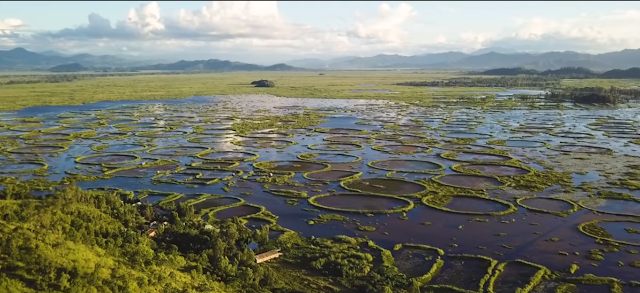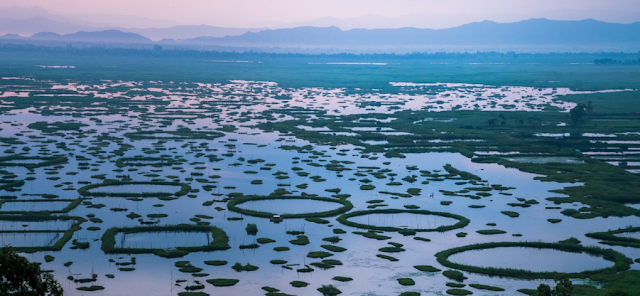Loktak Lake: Imagine standing on a bit of land that floats on water.
No, not for a few fictitious narrations or a moving-picture show scene, however in the real world - this can be one thing that’s really attainable in the state.
The largest fresh lake in Northeast India and the largest phumdis in the lake, the surface of Loktak Lake solely spans 236 km, is home to the world’s solely floating phumdis.
The term phumdis refers to a set of a heterogeneous mass of vegetation, soil, and organic matter at numerous stages of decomposition. Resembling miniature islands, these phumdis are found in numerous forms, floating on the lake.
Loktak Lake is located close to Moirang in Manipur state, India.
The etymology of Loktak is Lok = "stream" and tak = "the end".
Worlds only floating National Park
The Keibul Lamjao National Park, a home ground for the endangered Sangai cervid composed of 1 huge phumdis spanning 40km.Once upon a time, thousands of families lived in fisher huts fastidiously perked up atop the islands of vegetation covering a locality of three hundred sq. meters, the lake may be a lifeline for several folks.
It is a supply of water for hydropower generation, water supply, and irrigation within the region.
Who lives in the encompassing areas and on phumdis, also called “phumshongs”, fifty-five rural and concrete hamlets around the lake have a population of concerning 100,000 people.
The lake is also a source of financial gain for rural fishermen, kids of the fishermen will even be seen enjoying and running around on these phumdis.
The lake is also a source of financial gain for rural fishermen, kids of the fishermen will even be seen enjoying and running around on these phumdis.
The lake is currently divided into 2 sections: a no-development zone, and a conservation zone.
The conservation zone is (relatively) further from phumdi, and zilch could also be inbuilt the realm. trained worker huts and fish farms still float through the no-development zone—the rule is that no a lot of structures could also be inbuilt the longer term.
The conservation zone is (relatively) further from phumdi, and zilch could also be inbuilt the realm. trained worker huts and fish farms still float through the no-development zone—the rule is that no a lot of structures could also be inbuilt the longer term.



Comments
Post a Comment